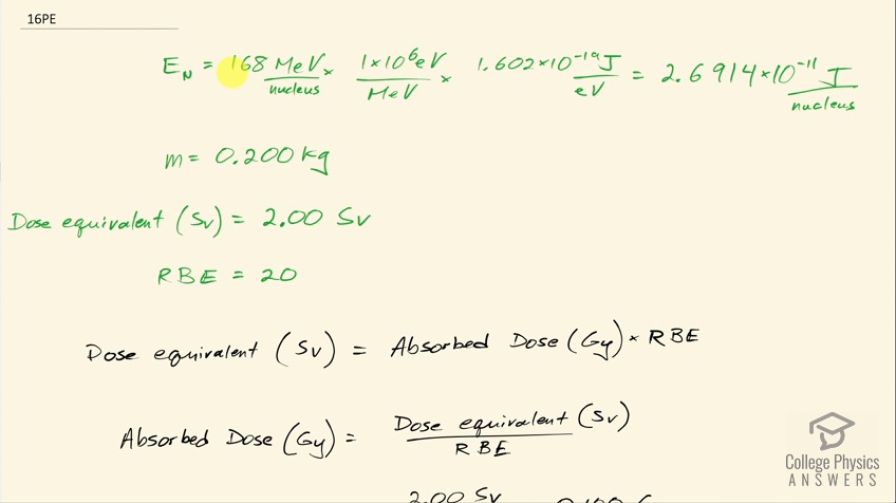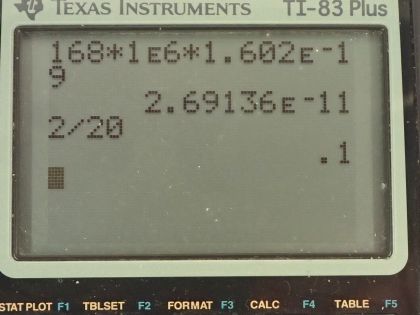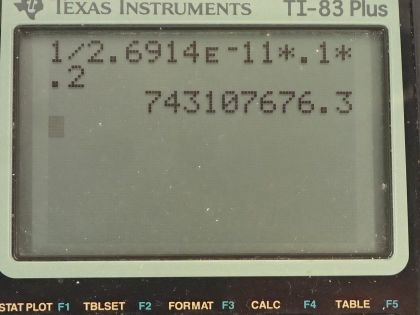Question
A beam of 168-MeV nitrogen nuclei is used for cancer therapy. If this beam is directed onto a 0.200-kg tumor and gives it a 2.00-Sv dose, how many nitrogen nuclei were stopped? (Use an RBE of 20 for heavy ions.)
Final Answer
Solution video
OpenStax College Physics for AP® Courses, Chapter 32, Problem 16 (Problems & Exercises)

vote with a rating of
votes with an average rating of
.
Calculator Screenshots
Video Transcript
This is College Physics Answers with Shaun Dychko. Nitrogen nuclei are being used for cancer therapy and each nucleus has an energy of 168 megaelectron volts; we'll convert that into joules per nucleus because our other units like grays are in units of joules per kilogram and so joules per nucleus is an mks unit— meters, kilograms and seconds. Okay! So we have 168 megaelectron volts is equivalent to 2.6914 times 10 to the minus 11 joules per nucleus. The tumor has a mass of 0.200 kilograms and it receives a dose equivalent in sieverts of 2.00 sieverts and we are told that relative biological effectiveness of these nitrogen nuclei is 20. So let's figure out what the absorbed dose is in grays in grays, and grays, recall is joules absorbed per kilogram of mass so the dose equivalent in sieverts is the absorbed dose in grays multiplied by the relative biological effectiveness and so we can divide both sides by RBE to solve for the absorbed dose in grays. So the absorbed dose in grays is 2.00 sieverts divided by 20 and that is 0.100 grays. So the number of nuclei then is 1 nucleus for every 2.6914 times 10 to the minus 11 joules, where I took the reciprocal of this fraction and I know I need to do that because we want to have nuclei in our answer and so let's put the nucleus in the numerator and then we'll multiply that by 0.100 joules per kilogram and writing all these fractions so that units cancel so we have joules canceling with joules and we have kilograms in the denominator which is a clue that we need to multiply by the mass in kilograms so let's multiply by 0.200 kilograms and we are left with nuclei. So that's 7.43 times 10 to the 8 nuclei.

